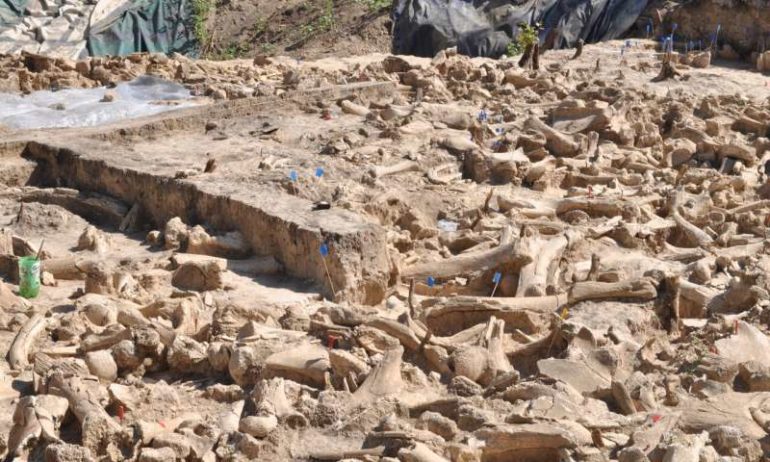Mysterious bone circles made from the remains of dozens of mammoths have revealed clues about how ancient communities survived Europe’s ice age.
About 70 of these structures are known to exist in Ukraine and the west Russian Plain.
New analysis shows the bones at one site are more than 20,000 years old, making it the oldest such circular structure built by humans discovered in the region. The bones were likely sourced from animal graveyards, and the circle was then hidden by sediment and is now a foot below current surface level.
The majority of the bones found at the site investigated, in the Russian Plains, are from mammoths. A total of 51 lower jaws and 64 individual mammoth skulls were used to construct the walls of the 30ft by 30ft structure and scattered across its interior. Small numbers of reindeer, horse, bear, wolf, red fox and arctic fox bones were also found.
Archaeologists from the University of Exeter have also found for the first time the remains of charred wood and other soft non-woody plant remains within the circular structure, situated just outside the modern village of Kostenki, about 500km south of Moscow. This shows people were burning wood as well as bones for fuel, and the communities who lived there had learned where to forage for edible plants during the Ice Age. The plants could also have been used for poisons, medicines, string or fabric. More than 50 small charred seeds were also found—the remains of plants growing locally or possibly food remains from cooking and eating.



